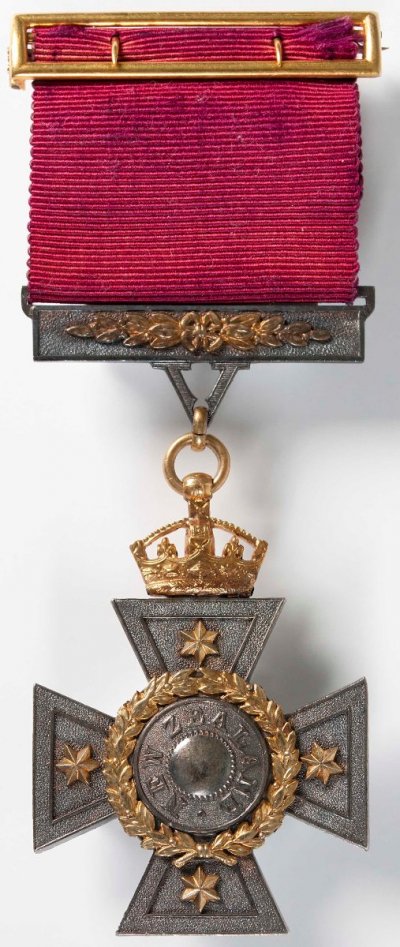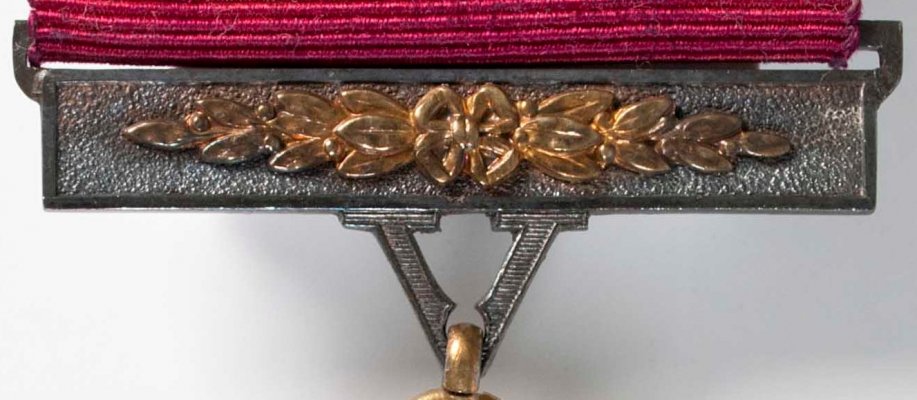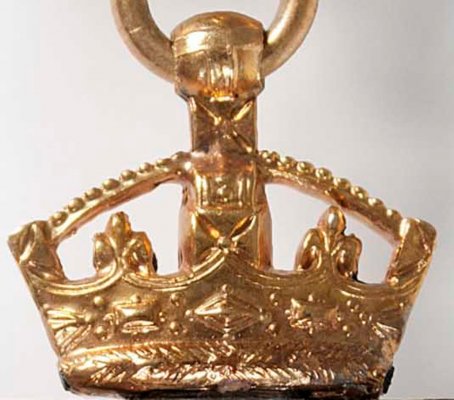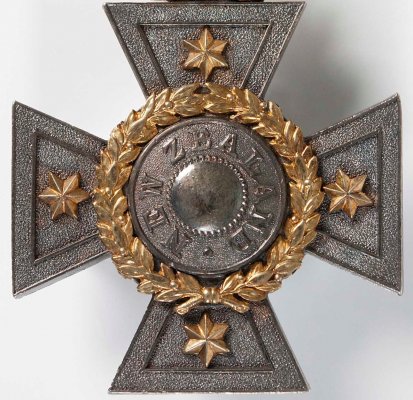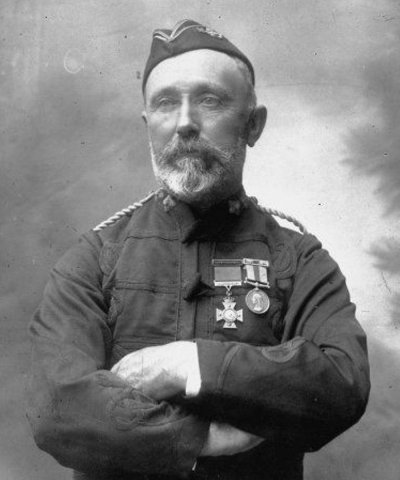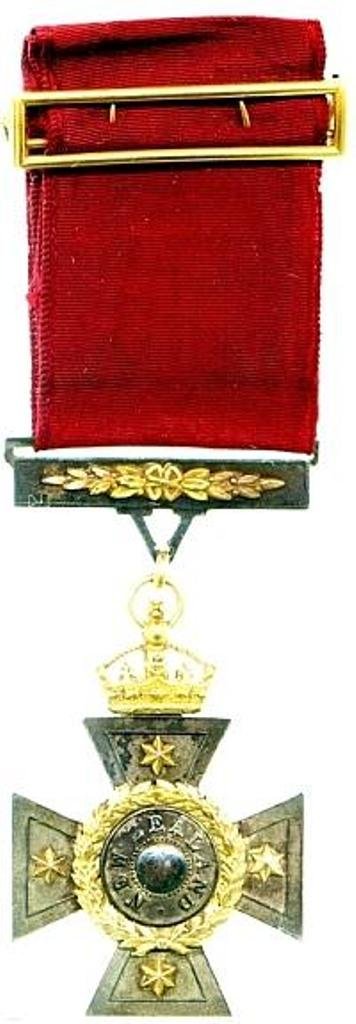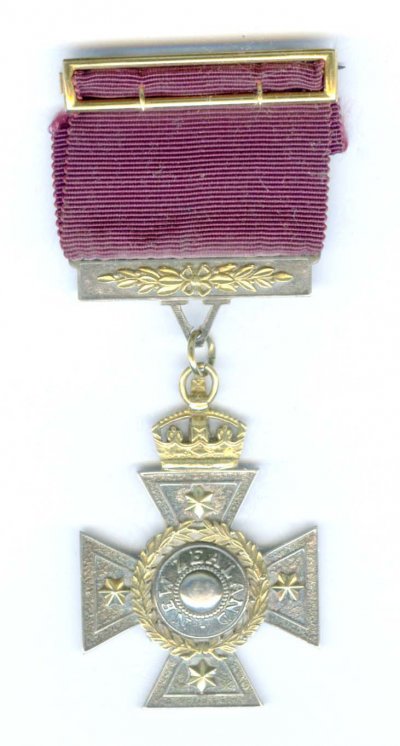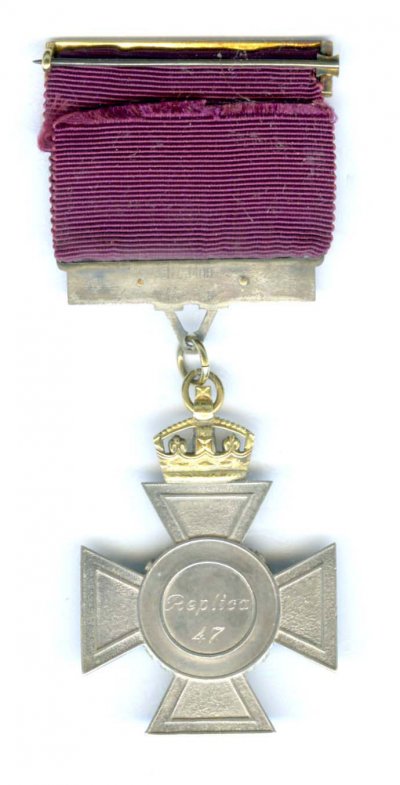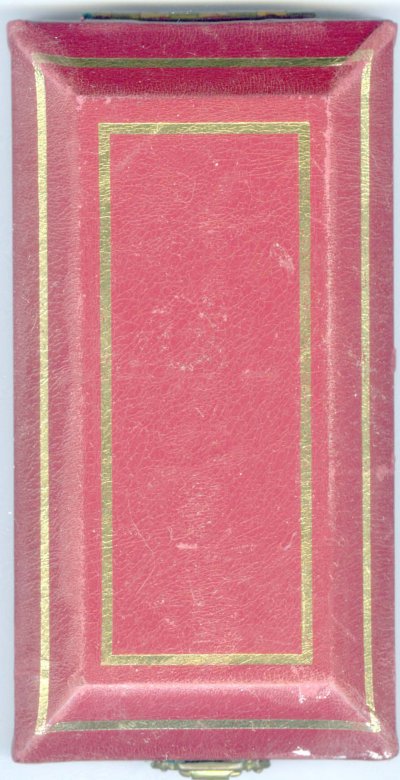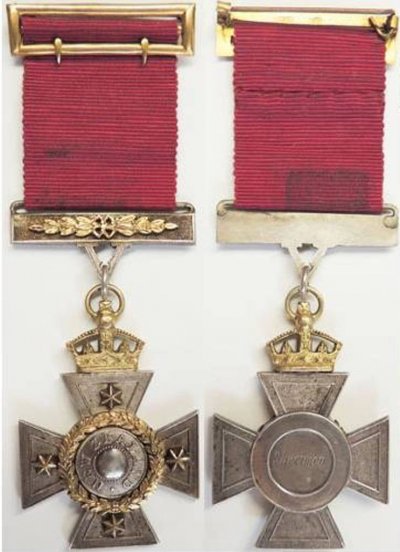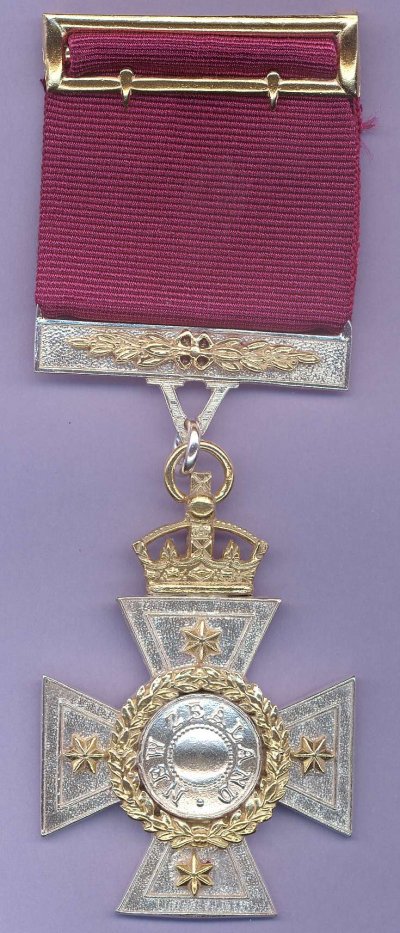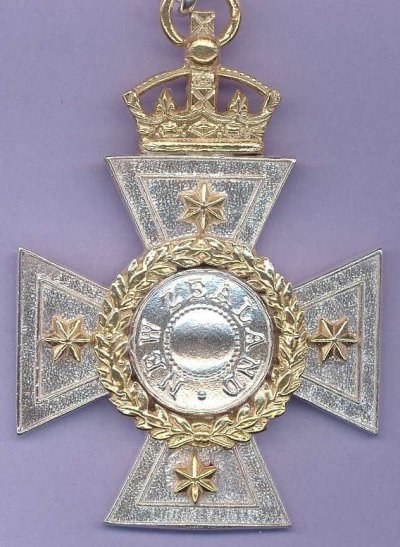Вы используете устаревший браузер. Этот и другие сайты могут отображаться в нём некорректно.
Вам необходимо обновить браузер или попробовать использовать другой.
Вам необходимо обновить браузер или попробовать использовать другой.
Новозеландские VC
- Автор темы JapanX
- Дата начала
Список тех самых двадцати трёх кавалеров
Private Thomas Adamson, Corps of Guides, Ahikereru, 1869.
Constable Henare Kepa te Ahururu, 1st Division, Armed Constabulary, Moturoa, 1868.
Sergeant Samuel Austin, Wanganui Contingent, Putahi Pa and Keteonetea, 1866.
Constable Solomon Black, 1st Division, Armed Constabulary, Ngatapa, 1869.
Constable Benjamin Biddle, 1st Division, Armed Constabulary, Ngatapa, 1869.
Sergeant Arthur Wakefield Carkeek, Armed Constabulary, Ohinemutu, 1870.
Dr Isaac Earl Featherston, Native Contingent, Otapawa Pa, 1866.
Sergeant George (Rowley) Hill, 1st Division, Armed Constabulary, Jerusalem Pa, 1869.
Trooper William Lingard, Kai Iwi Cavalry Volunteers, Tauranga-ika, 1868.
Captain Francis Joseph Mace, Taranaki Militia, Kaitikara River, 1863.
Captain Gilbert Mair, NZ Militia, Rotoma, 1870.
Sergeant Christopher Louis Maling, Corps of Guides, Tauranga-ika, 1868.
Lieutenant-Colonel Thomas McDonnell, NZ Militia, Paparatu, 1863 and Putahi Pa, 1866.
Ensign Henry William Northcroft, Patea Rangers, Pungarehu and Tirotiro Moana, 1866
Sub-inspector George Augustus Preece, Armed Constabulary, Ngatapa, 1869
Major Kepa Te Rangihiwinui, NZ Militia (Native Contingent), Moturoa, 1868, and Otauto 1869.
Inspector John Mackintosh Roberts, Armed Constabulary, Moturoa, 1868.
Trooper Antonio Rodriques de Sardinha,Taranaki Mounted Volunteers, Poutoko 1863 and Kaitake, 1864.
Sergeant Richard Shepherd, Armed Constabulary, Otauto, 1869.
Comet Angus Smith, Bay of Plenty Cavalry Volunteers, Opepe, 1869.
Major Ropata Wahawaha, Native Contingent, Ngatapa, 1869.
Assistant-Surgeon Samuel Walker, Armed Constabulary, Otauto, 1869.
Cornet Harry Charles William Wrigg, Bay of Plenty Cavalry Volunteers, Opotiki, 1867.
Private Thomas Adamson, Corps of Guides, Ahikereru, 1869.
Constable Henare Kepa te Ahururu, 1st Division, Armed Constabulary, Moturoa, 1868.
Sergeant Samuel Austin, Wanganui Contingent, Putahi Pa and Keteonetea, 1866.
Constable Solomon Black, 1st Division, Armed Constabulary, Ngatapa, 1869.
Constable Benjamin Biddle, 1st Division, Armed Constabulary, Ngatapa, 1869.
Sergeant Arthur Wakefield Carkeek, Armed Constabulary, Ohinemutu, 1870.
Dr Isaac Earl Featherston, Native Contingent, Otapawa Pa, 1866.
Sergeant George (Rowley) Hill, 1st Division, Armed Constabulary, Jerusalem Pa, 1869.
Trooper William Lingard, Kai Iwi Cavalry Volunteers, Tauranga-ika, 1868.
Captain Francis Joseph Mace, Taranaki Militia, Kaitikara River, 1863.
Captain Gilbert Mair, NZ Militia, Rotoma, 1870.
Sergeant Christopher Louis Maling, Corps of Guides, Tauranga-ika, 1868.
Lieutenant-Colonel Thomas McDonnell, NZ Militia, Paparatu, 1863 and Putahi Pa, 1866.
Ensign Henry William Northcroft, Patea Rangers, Pungarehu and Tirotiro Moana, 1866
Sub-inspector George Augustus Preece, Armed Constabulary, Ngatapa, 1869
Major Kepa Te Rangihiwinui, NZ Militia (Native Contingent), Moturoa, 1868, and Otauto 1869.
Inspector John Mackintosh Roberts, Armed Constabulary, Moturoa, 1868.
Trooper Antonio Rodriques de Sardinha,Taranaki Mounted Volunteers, Poutoko 1863 and Kaitake, 1864.
Sergeant Richard Shepherd, Armed Constabulary, Otauto, 1869.
Comet Angus Smith, Bay of Plenty Cavalry Volunteers, Opepe, 1869.
Major Ropata Wahawaha, Native Contingent, Ngatapa, 1869.
Assistant-Surgeon Samuel Walker, Armed Constabulary, Otauto, 1869.
Cornet Harry Charles William Wrigg, Bay of Plenty Cavalry Volunteers, Opotiki, 1867.
Добавим пару любопытных статей из
An Encyclopaedia of New Zealand, edited by A. H. McLintock, что в 1966 году опубликована была
NEW ZEALAND CROSS
The New Zealand Cross, a decoration peculiar to New Zealand and the Second Maori War of 1860–72, ranked in New Zealand next to the Victoria Cross. It is one of the rarest decorations in the world, only 23 having been awarded. Instituted by the Governor of New Zealand by an Order in Council, dated 10 March 1869, it met an urgent need for some decoration equivalent to the Victoria Cross, for which the locally raised forces had been considered ineligible. The Governor, Sir George Bowen, conferred five of the crosses before notifying the Secretary of State for the Colonies of the unprecedented action he had taken. In his dispatch, the Governor pleaded the low morale of the local troops and the need for some tangible form of recognition for bravery in action, which could be awarded immediately and without the inevitable delays should each case be referred to the Home Government for royal approval. The Governor was officially rebuked by the Secretary of State for the Colonies for overstepping the limits of the authority confided to him by the Queen, who was the fountain of all honour. As a number of crosses had already been conferred, Queen Victoria had little option under the circumstances but to ratify the Order in Council, which merely referred to the new award as a “Decorative Distinction” without giving it a name. The title, “New Zealand Cross”, was not adopted for some considerable time. In the intervening period it was vicariously referred to as the New Zealand Cross of Valour, Order of Valour, Order of Merit, Colonial Order of Merit, Order of the Southern Cross, Cross of New Zealand, Colonial Cross, Southern Cross, and Silver Cross. Even after its title had been settled, it was sometimes referred to as the New Zealand Cross or Order of Valour, the latter part of the name no doubt being added to justify the letter “V” used to form a link between the ribbon suspender clasp and the cross.
The institution of the cross can be attributed to the efforts of Colonel G. S. Whitmore who, on 19 November 1868, requested that a sum of money be made available from the Armed Constabulary Reward Fund for the purchase of 20 rosettes and special chevrons to be awarded to members of the Armed Constabulary who distinguished themselves in action and to whom a monetary grant of £5 should be made from the same fund. From this modest request, on behalf of the Armed Constabulary, the idea gradually developed into the New Zealand Cross as instituted. In his letter of 19 November 1868 Whitmore recommended Constable Henare Kepa Te Ahururu for a monetary reward for bravery and, in a further letter dated 14 January 1869, also nominated Constables Benjamin Biddle and Solomon Black for similar awards which they all duly received. These men became the first three upon whom the New Zealand Cross was bestowed.
The decoration could be conferred upon members of the Militia, Volunteers, and Armed Constabulary who, “when serving in the presence of the enemy, shall have performed some signal act of valour or devotion to duty, or who have performed any very intrepid action in the public service, and neither rank, nor long service, nor wounds, nor any other circumstances or condition whatsoever, save merit of conspicuous bravery, shall be held to establish a sufficient claim to the honour”. It was laid down that the decoration should consist of a silver cross with the name of the colony and the name of the recipient engraved thereon, and be suspended from the left breast by a crimson riband. The ribbon, which is 1½ in. wide, is deep crimson, and identical with that of the Victoria Cross. The order also provided for a silver bar to be attached to the riband in the event of a second award, but no such award was ever made.
The order required a Roll of Recipients to be kept with brief descriptions of the acts of valour, and that every inscription on the roll be published in the Government Gazette. The name of any recipient who was convicted of treason, felony, cowardice, or an infamous or disgraceful act, was to be erased forthwith from the roll. Although the first recipient of the cross, a Maori, later deserted, his name was not erased from the roll which was deposited with the Alexander Turnbull Library, Wellington, by the Army Department in 1945.
The New Zealand Cross Endowment Act of 1869 provided for the setting aside of 5,000 acres of land, the revenue from which was to be used to provide pensions for recipients who had become too old or infirm to earn their own livelihood. No action was taken to set aside the land until 1875, when surveys were made of an area of land for this purpose, but it was never proclaimed a reserve. After lengthy discussions, extending over a period of two years, Cabinet decided that the Endowment Act should be repealed and in 1877 the Defence Department was instructed to provide in its annual estimates for a yearly pension of £10 for each recipient as from 1 January 1878.
An Encyclopaedia of New Zealand, edited by A. H. McLintock, что в 1966 году опубликована была
NEW ZEALAND CROSS
The New Zealand Cross, a decoration peculiar to New Zealand and the Second Maori War of 1860–72, ranked in New Zealand next to the Victoria Cross. It is one of the rarest decorations in the world, only 23 having been awarded. Instituted by the Governor of New Zealand by an Order in Council, dated 10 March 1869, it met an urgent need for some decoration equivalent to the Victoria Cross, for which the locally raised forces had been considered ineligible. The Governor, Sir George Bowen, conferred five of the crosses before notifying the Secretary of State for the Colonies of the unprecedented action he had taken. In his dispatch, the Governor pleaded the low morale of the local troops and the need for some tangible form of recognition for bravery in action, which could be awarded immediately and without the inevitable delays should each case be referred to the Home Government for royal approval. The Governor was officially rebuked by the Secretary of State for the Colonies for overstepping the limits of the authority confided to him by the Queen, who was the fountain of all honour. As a number of crosses had already been conferred, Queen Victoria had little option under the circumstances but to ratify the Order in Council, which merely referred to the new award as a “Decorative Distinction” without giving it a name. The title, “New Zealand Cross”, was not adopted for some considerable time. In the intervening period it was vicariously referred to as the New Zealand Cross of Valour, Order of Valour, Order of Merit, Colonial Order of Merit, Order of the Southern Cross, Cross of New Zealand, Colonial Cross, Southern Cross, and Silver Cross. Even after its title had been settled, it was sometimes referred to as the New Zealand Cross or Order of Valour, the latter part of the name no doubt being added to justify the letter “V” used to form a link between the ribbon suspender clasp and the cross.
The institution of the cross can be attributed to the efforts of Colonel G. S. Whitmore who, on 19 November 1868, requested that a sum of money be made available from the Armed Constabulary Reward Fund for the purchase of 20 rosettes and special chevrons to be awarded to members of the Armed Constabulary who distinguished themselves in action and to whom a monetary grant of £5 should be made from the same fund. From this modest request, on behalf of the Armed Constabulary, the idea gradually developed into the New Zealand Cross as instituted. In his letter of 19 November 1868 Whitmore recommended Constable Henare Kepa Te Ahururu for a monetary reward for bravery and, in a further letter dated 14 January 1869, also nominated Constables Benjamin Biddle and Solomon Black for similar awards which they all duly received. These men became the first three upon whom the New Zealand Cross was bestowed.
The decoration could be conferred upon members of the Militia, Volunteers, and Armed Constabulary who, “when serving in the presence of the enemy, shall have performed some signal act of valour or devotion to duty, or who have performed any very intrepid action in the public service, and neither rank, nor long service, nor wounds, nor any other circumstances or condition whatsoever, save merit of conspicuous bravery, shall be held to establish a sufficient claim to the honour”. It was laid down that the decoration should consist of a silver cross with the name of the colony and the name of the recipient engraved thereon, and be suspended from the left breast by a crimson riband. The ribbon, which is 1½ in. wide, is deep crimson, and identical with that of the Victoria Cross. The order also provided for a silver bar to be attached to the riband in the event of a second award, but no such award was ever made.
The order required a Roll of Recipients to be kept with brief descriptions of the acts of valour, and that every inscription on the roll be published in the Government Gazette. The name of any recipient who was convicted of treason, felony, cowardice, or an infamous or disgraceful act, was to be erased forthwith from the roll. Although the first recipient of the cross, a Maori, later deserted, his name was not erased from the roll which was deposited with the Alexander Turnbull Library, Wellington, by the Army Department in 1945.
The New Zealand Cross Endowment Act of 1869 provided for the setting aside of 5,000 acres of land, the revenue from which was to be used to provide pensions for recipients who had become too old or infirm to earn their own livelihood. No action was taken to set aside the land until 1875, when surveys were made of an area of land for this purpose, but it was never proclaimed a reserve. After lengthy discussions, extending over a period of two years, Cabinet decided that the Endowment Act should be repealed and in 1877 the Defence Department was instructed to provide in its annual estimates for a yearly pension of £10 for each recipient as from 1 January 1878.
DESIGNING OF THE CROSS
A Royal Commission was appointed on 12 July 1870 to decide upon a design for the decorative distinction, the selected design being forwarded to England for approval by Queen Victoria in January 1871. On 7 June 1871 the Agent-General of the colony in London was instructed to have 20 crosses made to the approved design, and the work was entrusted to Messrs Phillips Bros. and Son of Cockspur Street, London. The Agent-General, Dr I. E. Featherston (who was later to be awarded the cross), in conjunction with Colonel Whitmore who happened to be in London at the time, authorised various modifications of the design as suggested by the goldsmiths. These included a major change in the shape of the crown and the introduction of a suspender clasp having a V-link that was a direct copy from the Victoria Cross. By the time the Government received notification of the design changes, it was too late to do anything as the crosses were already being struck.
The decoration consists of a silver cross pattée, 1 in. across the limbs, surmounted by a gold crown. In the centre of the cross is “NEW ZEALAND”, surrounded by a gold laurel wreath, and on each limb is a six-pointed star in gold. The reverse of the cross is plain in the centre except for two concentric circles in relief, between which are engraved the recipient's rank, name, and unit. The date of the action is engraved within the inner circle, while some of the crosses also record the place of the action above the date. The silver suspender clasp, ornamented with a sprig of laurel in gold, bears on the lower edge a V-link to which the cross is attached by two gold rings. A two-pronged buckle brooch in gold was provided to attach the decoration to the jacket or coat.
A Royal Commission was appointed on 25 September 1873 to examine a number of recommendations submitted following the award of the first seven crosses, and to make recommendations to the Governor for any further awards. A number of recommendations were rejected on the grounds that the events concerned had taken place prior to the institution of the decoration, and the Commissioners considered that no retrospective authority was contained in the Order in Council. In spite of the fact that the Commissioners were required to report to the Governor within 10 days and a number of recommendations were upheld, no further awards were made for almost two years.
In August 1875 the Governor, on a recommendation forwarded from London by General Sir Trevor Chute, late Imperial General Officer Commanding the Forces in New Zealand, approved of the award of the cross to Dr I. E. Featherston for meritorious and intrepid services rendered in 1865–66. The Governor's action was the subject of considerable discussion in the Legislative Council as some of the members were of the opinion that the General should have recommended Featherston for the Victoria Cross at the time, as he was competent to do so, and not to have waited until the New Zealand Cross was instituted several years later. A special board of officers appointed to review the recommendations of the Commissioners of 1873 reported in April 1876 that all were upheld, as was also the case of some that had been declined by the Commissioners on the grounds that they were time-barred for the award. No doubt this change of view was influenced by the award made to Dr Featherston a few months previously.
A Royal Commission was appointed on 12 July 1870 to decide upon a design for the decorative distinction, the selected design being forwarded to England for approval by Queen Victoria in January 1871. On 7 June 1871 the Agent-General of the colony in London was instructed to have 20 crosses made to the approved design, and the work was entrusted to Messrs Phillips Bros. and Son of Cockspur Street, London. The Agent-General, Dr I. E. Featherston (who was later to be awarded the cross), in conjunction with Colonel Whitmore who happened to be in London at the time, authorised various modifications of the design as suggested by the goldsmiths. These included a major change in the shape of the crown and the introduction of a suspender clasp having a V-link that was a direct copy from the Victoria Cross. By the time the Government received notification of the design changes, it was too late to do anything as the crosses were already being struck.
The decoration consists of a silver cross pattée, 1 in. across the limbs, surmounted by a gold crown. In the centre of the cross is “NEW ZEALAND”, surrounded by a gold laurel wreath, and on each limb is a six-pointed star in gold. The reverse of the cross is plain in the centre except for two concentric circles in relief, between which are engraved the recipient's rank, name, and unit. The date of the action is engraved within the inner circle, while some of the crosses also record the place of the action above the date. The silver suspender clasp, ornamented with a sprig of laurel in gold, bears on the lower edge a V-link to which the cross is attached by two gold rings. A two-pronged buckle brooch in gold was provided to attach the decoration to the jacket or coat.
A Royal Commission was appointed on 25 September 1873 to examine a number of recommendations submitted following the award of the first seven crosses, and to make recommendations to the Governor for any further awards. A number of recommendations were rejected on the grounds that the events concerned had taken place prior to the institution of the decoration, and the Commissioners considered that no retrospective authority was contained in the Order in Council. In spite of the fact that the Commissioners were required to report to the Governor within 10 days and a number of recommendations were upheld, no further awards were made for almost two years.
In August 1875 the Governor, on a recommendation forwarded from London by General Sir Trevor Chute, late Imperial General Officer Commanding the Forces in New Zealand, approved of the award of the cross to Dr I. E. Featherston for meritorious and intrepid services rendered in 1865–66. The Governor's action was the subject of considerable discussion in the Legislative Council as some of the members were of the opinion that the General should have recommended Featherston for the Victoria Cross at the time, as he was competent to do so, and not to have waited until the New Zealand Cross was instituted several years later. A special board of officers appointed to review the recommendations of the Commissioners of 1873 reported in April 1876 that all were upheld, as was also the case of some that had been declined by the Commissioners on the grounds that they were time-barred for the award. No doubt this change of view was influenced by the award made to Dr Featherston a few months previously.
Наконец, об истинном количестве отбитых крестов
NUMBER OF CROSSES STRUCK
The dies of the New Zealand Cross had been left in the hands of Phillips the goldsmith who completed an order for a further five crosses in 1886, making a total of 25 struck ostensibly for awards. A few suitably engraved specimens were authorised to be struck for the Royal Mint Museum and eminent medal collectors in England, but the dies passed through two other hands before they were recovered by the Agent-General in 1908. In the intervening years a number of unauthorised specimens were struck, two of which are known to have been engraved so as to appear as the authentic decorations of Constable Black and Trooper Lingard, but are in fact spurious as they do not bear the Phillip's cartouche, and the originals still exist. The Phillip's cartouche was affixed on the reverse of the suspender clasp of the original 20 crosses made in 1871, but was omitted from the five made in 1886. The dies were returned to New Zealand in 1953 and deposited with the Dominion Museum, Wellington.
In 1885 the Premier proposed that the New Zealand Cross be extended for award to those who by outstanding bravery were responsible for saving human life. It was suggested that, to distinguish such awards from the military crosses, the stars be omitted from the cross and the ribbon be of a different colour. This proposal was rejected when it was found that the medal of the Royal Humane Society of Australasia, instituted in 1882, was available for rewarding bravery of this nature.
Although the Order in Council instituting the New Zealand Cross has never been annulled, it is unlikely that it will ever be invoked to make any further awards. Apart from the more general availability of the Victoria Cross since 1881, the various forces upon which the New Zealand Cross could be conferred have all been disbanded, the Armed Constabulary in 1886, and the Militia and the Volunteers in 1911.
New Zealand Crosses, either as genuine awards or specimens, are held by the following museums and notable collections: The Royal Collection, Windsor Castle; The House of Commons, Westminster; The Royal Mint Museum, London; The British Army Medal Office Collection, Droitwich; Dominion Museum, Wellington; Alexander Turnbull Library, Wellington; United Services Officers' Club, Wellington; War Memorial Museum, Auckland; Hawke's Bay Museum, Napier; Taranaki Museum, New Plymouth; Otago Museum, Dunedin; Te Awamutu Museum, Te Awamutu; Melbourne Museum, Australia; Los Angeles County Museum, U.S.A.; and the American Numismatic Society's Collection, New York, U.S.A.
NUMBER OF CROSSES STRUCK
The dies of the New Zealand Cross had been left in the hands of Phillips the goldsmith who completed an order for a further five crosses in 1886, making a total of 25 struck ostensibly for awards. A few suitably engraved specimens were authorised to be struck for the Royal Mint Museum and eminent medal collectors in England, but the dies passed through two other hands before they were recovered by the Agent-General in 1908. In the intervening years a number of unauthorised specimens were struck, two of which are known to have been engraved so as to appear as the authentic decorations of Constable Black and Trooper Lingard, but are in fact spurious as they do not bear the Phillip's cartouche, and the originals still exist. The Phillip's cartouche was affixed on the reverse of the suspender clasp of the original 20 crosses made in 1871, but was omitted from the five made in 1886. The dies were returned to New Zealand in 1953 and deposited with the Dominion Museum, Wellington.
In 1885 the Premier proposed that the New Zealand Cross be extended for award to those who by outstanding bravery were responsible for saving human life. It was suggested that, to distinguish such awards from the military crosses, the stars be omitted from the cross and the ribbon be of a different colour. This proposal was rejected when it was found that the medal of the Royal Humane Society of Australasia, instituted in 1882, was available for rewarding bravery of this nature.
Although the Order in Council instituting the New Zealand Cross has never been annulled, it is unlikely that it will ever be invoked to make any further awards. Apart from the more general availability of the Victoria Cross since 1881, the various forces upon which the New Zealand Cross could be conferred have all been disbanded, the Armed Constabulary in 1886, and the Militia and the Volunteers in 1911.
New Zealand Crosses, either as genuine awards or specimens, are held by the following museums and notable collections: The Royal Collection, Windsor Castle; The House of Commons, Westminster; The Royal Mint Museum, London; The British Army Medal Office Collection, Droitwich; Dominion Museum, Wellington; Alexander Turnbull Library, Wellington; United Services Officers' Club, Wellington; War Memorial Museum, Auckland; Hawke's Bay Museum, Napier; Taranaki Museum, New Plymouth; Otago Museum, Dunedin; Te Awamutu Museum, Te Awamutu; Melbourne Museum, Australia; Los Angeles County Museum, U.S.A.; and the American Numismatic Society's Collection, New York, U.S.A.
mikulas strenk
Местный
Натурально, в округе одни реплики.
Но и они бывают разными.
Так называемыми "официальными" - от монетного двора Новой Зеландии (чуть ли не оригинальными dies отбиты)
Я так понял,что у многих коллекционеров только коллекционерские копии?А где оригиналы?Семьи не хотят расстаться с ними?Есть проходы оригиналов в продаже?Интересно,что награда долгое время была неофициальной.
Наверно,кгда-нибудь напишешь теми и о The Georg Cross ,который тоже редкий.

Интересно,что награда долгое время была неофициальной.
Всегда была официальной.
Королеву уведомили и она сразу одобрила.
"Шеф был в курсе"

Только называлась поначалу
Decorative Distinction
Я так понял,что у многих коллекционеров только коллекционерские копии?
Хорошая копия тоже денег стоит.
За Spink запросто штуку бака, а то и больше попросят



